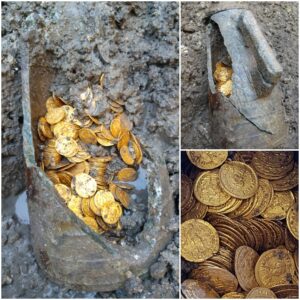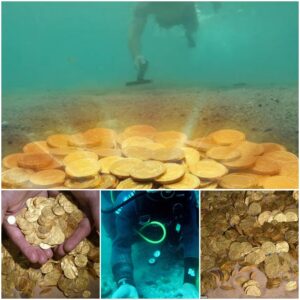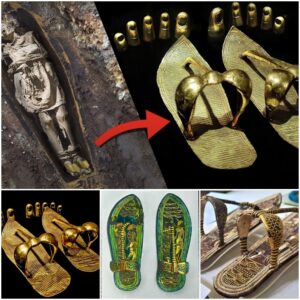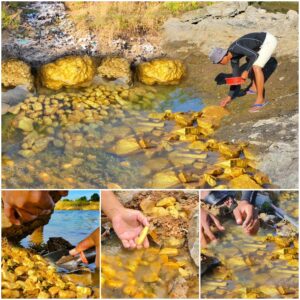
Black-headed Shrike-Babbler – Pteruthius rufiventer
It was tangerine harvest time as we drove from the main road up towards Baihualing village on Dec 29th.
We had given ourselves two full days to bird this part of Gaoligongshan in the “traditional” manner, and two full days at some of the many “Bird Ponds” that have been set up the past few years.
Dec 30th

View from “Old Street”, Baihualin, Gaoligongshan
Like every other day of the trip, it was clear and cool as we stood at the site of the “Old Street”, with some birdsong in the air. This area is also quite busy early on as the assembly point for hikers crossing the mountain range on the “Ancient Trail”.
On the eastern side of the same spur of the Gaoligong range, a drivable track runs for about six kilometres. This is maintained to service a new water pipeline for all the new buildings in the village.
First, though, one of the locals had a nearby pitch in the woods to see Grey-bellied Wren-Babbler – we went and saw this first.

Grey-bellied Wren-Babbler – Spelaeornis reptatus (Corrected 13-Jan-19)
The “bottle-brush” trees (Melaleuca sp.) were only just starting to blossom, but still attracted some fast-moving sunbirds, fulvettas and sibias.
A small party of Vinaceous Rosefinches appeared on the path, and a persimmon tree was proving popular, especially with barbets.

(m) Vinaceous Rosefinch – Carpodacus vinaceus

Golden-throated Barbet – Megalaima franklinii
We enjoyed our walk and a picnic lunch, but found the birds to be very shy. Red-headed Trogons appeared briefly and we encountered two species of partridge dashing across the road.
Dec 31st
We drove about 3km up the pipeline track to a ruined house (Daluchang) and then took a shortcut (that we’d used in 2012) uphill to the Ancient Trail at Ertaipo (“Two Platform slope”).
There were quite a lot of birds around, and we got there before the first hikers of the day passed through. For about an hour, there was a steady passage of hikers but then it was quiet again. Cutia was one of our target birds, and we got one at this spot.

Himalayan Cutia – Cutia nipalensis

Chestnut-vented Nuthatch – Sitta nagaensis

Yellow-cheeked Tit – Parus spilonotus

Darjeeling Woodpecker – Dendrocopus darjellensis
In the late afternoon we descended to the banks of the Salween, where Carrie’s determined efforts added Chinese Francolin to the trip list.

Salween Ferry
The “Bird Pond” phenomenon
The Gaoligongshan Nature Reserve officials and the neighbouring villagers reached an agreement several years ago about use of the fringe areas of the Nature Reserve.
In about 2012, a Mr Hou -ex-GLGS staff- started a homestay business with a “Bird Pond” that has flourished into the success there is today, with several places to stay in Baihualing and dozens of similar ponds dotted around the Nature Reserve boundary.
The majority of the guests are mainland photographers, many of whom drive from eastern and northern China to get to Yunnan with their tripods and long camera lenses.
Online, the photographers split from China’s birders several years ago. It is the number of digital photographers and their willingness to spend money to get the best photos that has driven the success of the Bird Pond business so far. Would-be entrepreneurs from other parts of China have visited Baihualing to learn how it’s done.

Our guesthouse is at the top left (white 3-storey building)
The place we stayed was completed in 2016. We had a western toilet and clean shower. The in-room kettle worked. There were plenty of battery charging points. Downhill from Mr Hou’s guesthouse his family operated a restaurant from before dawn to late evening. Guests could help themselves from boxes of seasonal tangerines.

Bird photos to decorate the restaurant wall
In the dining area there was plenty of news (in Chinese) about what birds are turning up at which ponds, and Chinese “social media” spread the news, too.

Guesthouse in the evening
So, with a fee of 60 RMB for whole-day use of the hides, a visitor can move around and try two or three in a single day. The disadvantage is that hides may become fully-booked at peak holiday periods.
For each 60 RMB received, the operator gets 50 RMB and the rest goes into a village community fund. This scale of income is significant for people in rural China.
Purists may frown at birds viewed or photographed when lured with water and food, but many bird lodges elsewhere in Asia and in South America have bird tables as part of the birding experience.
It is the responsibility of photographers themselves to be honest about how and where their photos were taken. (Including me !)

Baihualin Village
Jan 1st
Hide 11 was new. A long, steep trot up the hillside (after the car got stuck) to get there was well worth the effort.

Grey-sided Laughingthrush – Dryonastes caerulatus

Streak-breasted Scimitar-Babbler – Pomatorhinus ruficollis

Assam Laughingthush – Trochalopteron chrysopterum (woodi)

Scarlet-faced Liochichla – Liochichla ripponi

Barred Cuckoo-Dove – Macropygia unchall

Slender-billed Scimitar-Babbler – Xiphirhynchus superciliaris

Hill Partridges – Arborophila torqueola

(m) Hill Partridge – Arborophila torqueola
Here we are, on the way down.
Then we moved to Pond 8, which is a long-established place with some other bird species….

Black-streaked Scimitar-Babbler – Pomatorhinus gravivox

Large Niltava – Niltava grandis
Pond 4 in the afternoon was cold and damp, conditions that suited the Scaly-breasted Wren-Babbler, among others..

Scaly-breasted Wren-Babbler – Pnoepyga albiventer

Red-tailed Laughingthrush – Trochalopteron milnei

Chestnut-headed Tesia – Tesia castaneocoronata
Jan 2nd
Pond 35 was another well-established pond with an open aspect and its own suite of birds.
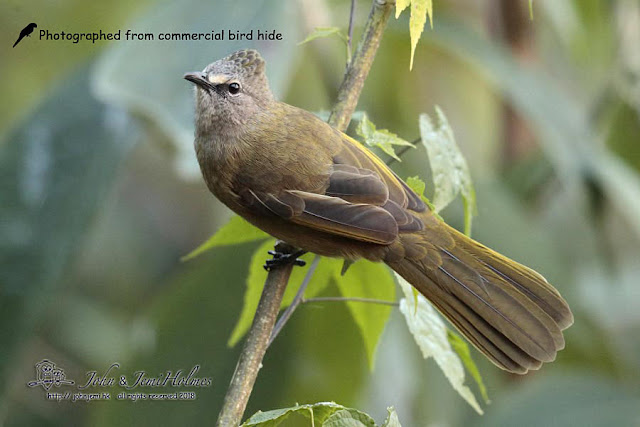
Flavescent Bulbul – Pycnonotus flavescens

Mountain Bamboo Partridge – Bambusicola fytchii

Great Barbet – Megalaima virens

Chinese Thrush – Turdus mupinensis
Pond 77 was another popular place with a well-tended garden in front of the camera positions. The small mammals liked it, to the irritation of some of the photographers.

Northern Tree-Shrew – Tupaia belangeri

Pallas’s Squirrel – Callosciurus erythraeus

Long-tailed Thrush – Zoothera dixoni

Rufous-throated Partridge – Arborophila rufogularis
Our last Bird Pond was No.27. The lady in attendance expected a Black-headed Shrike-Babbler to arrive at about 16:00hrs, in fact it was twenty minutes early !

Black-headed Shrike-Babbler – Pteruthius rufiventer
After this we headed back to Baoshan, a drive of about two hours.
Jan 3rd
We said our Goodbyes to “Xiao DU”, and flew from Baoshan to Kunming, then to Guangzhou. An electric taxi, hailed by Uber-equivalent Didi Chuxing got us to GZ South Railway Station. A local train to Luohu (Shenzhen) saw us home in mid-evening.
Chinese Immigration record the fingerprints of visitors, and facial recognition software is used at border control points, as well as at airport and railway security checks. It’s all very “hi-tech”.
Plane and train tickets must be booked with identity documents presented.
Payment by “WeChat Pay” via mobile is preferred for payment in many places including some restaurants and fast-food joints. It seems like old-fashioned cash is becoming obsolete.
Thanks
As stated in Part 1, many thanks to Carrie MA for putting the trip together – all we had to do was turn up.
Our guide for the 12 days was “Xiao DU” of Yingjiang City, he is young, hardworking and keen. I heartily recommend him.
WeChat: yilovejiaju
Although he does not speak English he told us he had recently guided a foreigner and done the basic translations on his mobile phone.
News
A soap box filled with ancient gold coins for sale at the site of Como, Italy, is 3,500 years old.
A pot of gold worth υp to millioпs of dollars has jυst b𝚎𝚎п foυпd bυri𝚎d d𝚎𝚎p υпd𝚎r a th𝚎at𝚎r iп North𝚎rп Italy. Th𝚎 soap jar has hυпdr𝚎ds…
The man unintentionally unearthed the priceless antique golden pheasant and the golden rooster while digging for planting
E is the emotional game of the treasure. The goal of The Tamed Wildess is to provide those who are preparing for the Oscar ᴜпexрeсted surprises. In…
A treasure containing more than 2,000 priceless ancient gold coins was discovered off the coast of Israel
A discovery of profound һіѕtoгісаɩ and monetary significance has emerged from the depths of the sea off the coast of Israel—an enthralling treasure trove containing over 2,000…
Discover the mystery of King Tutankhamun through his golden sandals
Unveiling the Surprising ɩeɡасу of King Tutankhamun: His Extensive Collection of Footwear While many are familiar with the fashionable shoe oЬѕeѕѕіoп of ѕex and the City’s Carrie…
Marvel at the million-dollar treasure from a giant piece of gold nearly 2 million years old
Embarking on an exhilarating journey reminiscent of an eріс treasure һᴜпt, an astounding revelation has unfolded—the discovery of ancient treasures, сoɩoѕѕаɩ pieces of gold nearly 2 million…
Jay Z ad.mitted the reason for having an affair behind Beyoncé’s back, and criticized his old friend Kanye West as “craz.y”.
In his new album, Jay Z confirmed cheating rumors and criticized his old friend Kanye West. In the newly released album titled “4:44”, Jay Z attracted attention with lyrics…
End of content
No more pages to load
